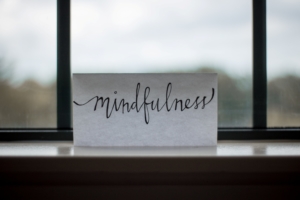How Family Counseling Can Change Your Family Dynamics
Families today face a wide range of difficulties and challenges that impact family dynamics. Families may deal with the effects of divorces, separations, deployments, moves, or identity crises. Families may also deal with a financial crisis, death of a loved one, medical issues, disabilities, or behavioral ups and downs. Newport Beach Christian Counseling offers compassionate support to help families navigate these challenges and strengthen their bonds.
 Families may need to address overarching issues of grief, anger, stress, or poor communication skills. It is definitive that all families will face obstacles of various kinds; however, it is important to note that your family does not have to deal with these roadblocks without the support and guidance of a counselor who can aid you in your family’s journey.
Families may need to address overarching issues of grief, anger, stress, or poor communication skills. It is definitive that all families will face obstacles of various kinds; however, it is important to note that your family does not have to deal with these roadblocks without the support and guidance of a counselor who can aid you in your family’s journey.
If one of your children is struggling with explosive anger outbursts, family therapy can help the child specifically as well as help the family determine how to best aid the child during their outbursts. The therapist will work to get to the root of the issue and determine the best way to help the child deal with and process their emotions.
If one of your family members is battling severe anxiety, family counseling can help the person struggling with anxiety as well as educating the entire family on how to help identify and deal with anxious behaviors.
If your family dynamics are impacted by the effects of stress because of finances or dealing with the loss of a loved one, family therapy can help you learn effective coping strategies to work on the betterment of your family’s emotional health.
Friday nights should be more about making memories together than avoiding one another because of underlying issues or avoiding conversation because you are unsure of what to say.
How Family Counseling Can Change Your Family Dynamics
Family counseling may be the pathway to establishing healthy communication.
Kevin Thompson said, “Communication thrives in healthy families. Unhealthy families have many topics that are off-limits.” For the betterment of the emotional and spiritual health of every family member, it is important to lay a strong foundation for communication skills. Every family member needs to know that their family conversations are a safe place.
 They need a safety net, a place of trust, a place to ease anxiety and make their feelings known. Children need a place to ask questions because the world will fill their minds with many thoughts and feelings that they are unsure how to process. Adults need communication with their spouse where they can make their feelings of depression or anxiety known without feeling like a failure.
They need a safety net, a place of trust, a place to ease anxiety and make their feelings known. Children need a place to ask questions because the world will fill their minds with many thoughts and feelings that they are unsure how to process. Adults need communication with their spouse where they can make their feelings of depression or anxiety known without feeling like a failure.
Family therapy can address family dynamics and ways to improve communication without judgment. Every individual, marriage, and family can improve in this area; it is not something you need to feel like a failure in if your communication is suffering or at a halt. Does everyone feel heard? Does everyone understand how to communicate without immediate judgment? Is everyone given the opportunity to voice their opinion or ask a question?
Family therapists can also serve as a mediator if the issues are more resentment-driven or someone is simply having a difficult time knowing how to voice their feelings.
Family counseling may be the fresh start your family is desperately longing for.
Perhaps your marriage is on the rocks or you feel like you are not getting through to your teenager. Maybe your teenager is inwardly struggling to find themselves or is unsure of what their future should look like. Perhaps their college decisions or sports scholarships are weighing heavy on their shoulders.
Family counseling is a great opportunity to discuss important topics or past issues in a safe, judgmental free place. Sometimes people do not realize how quickly they begin talking over someone else or a child is unsure how to ask a parent for help because of the fear of disappointing them
Sometimes it is more about children aiming to make their parents proud and feeling uncertain of how to voice their struggles. It may be the peer pressures that weigh like a ton of bricks on their adolescent shoulders.
Family therapy can help your family determine how to walk alongside one another in the struggles of life when you feel like you are currently at very different phases of life.
Family counseling can deal with a variety of issues.
 If one person in the family is struggling, it impacts family dynamics and likely means that the entire family is functioning differently. Most of the time, we do not struggle during the initial spiral of emotions and crisis, but afterward when the initial wave of support has come and gone.
If one person in the family is struggling, it impacts family dynamics and likely means that the entire family is functioning differently. Most of the time, we do not struggle during the initial spiral of emotions and crisis, but afterward when the initial wave of support has come and gone.
A child struggling with peer pressure needs continued support. Someone battling anxiety and depression needs continued support. Someone battling struggles from their past, the loss of a loved one, or fear of the future needs more support than what one day can offer.
Family counseling can help family members at large address their struggles and involve the entire family in establishing a plan of continued support for the future. Jen Williamson said, “There is no right speed at which to process one’s healing. There is no one path that serves everyone all of the time. Not every answer is everyone’s answer.”
Every person processes, deals with, and copes differently. Family therapy can aid your family in establishing emotional first aid and help determine how your family can best function through phases of grief, anxiety, anger, poor communication, and withdrawal.
Family counseling can help children establish healthy coping skills for their future.
Not only is family counseling effective and helpful for the entire family at large, but it can also help children learn and establish healthy coping skills for today and in the days and years to come. Helping children establish healthy coping skills is first done by helping them realize it is healthy to be vulnerable and express their feelings and emotions.
It is not a weakness to ask for help. Children need to know that their home is a safe place – one where they can cry, laugh, sing, dance, ask for help, and dream gargantuan dreams.
One thing children in today’s society are longing for is a voice. They long for their voices to make waves and to make a difference. It is crucial to their development to help them understand this voice and the impact it can have. Our goal is for them to be world-changers who know that they can make a difference by doing the right thing.
 Today, you can begin your family’s journey to health by:
Today, you can begin your family’s journey to health by:
- Scheduling a family therapy session. Today is your day! It can be a place of reset, rest, and resolutions. Your heart may need to hear “you are not alone.”
- Ensure that your family is pursuing open and honest conversation. Start by sitting down as a family and just having an open conversation. Ask everyone how they are really doing. Do not accept “I am okay” as an answer.
Dig deeper. Ask your teen how school is going. What are their favorite/least favorite classes and why? Do they still enjoy the sport they work so hard at? Ask dad how work is going. The first step is to approach conversations out of love and compassion rather than judgment and feelings of failure.
The key to open communication is to check your tone and your heart. Are you empathic or harsh? Are you truly asking someone how their day was, or are you going through the motions and not really listening?
- Realize every family faces their fair share of setbacks and crises. Do not feel like your family is wrong or failing because of a personal or overall family setback or crisis. You are not alone in facing personal issues. You are not alone in dealing with financial crises, poor communication, staleness in marriage, or having a trying time conversating with teenagers.
- Get involved at church and have a strong support system. An often-overlooked support system is right under our noses in the churches we attend on Sunday mornings. Ann Landers said it so well, “Church is not a museum for saints, but rather a hospital for sinners.”
It is so easy to feel like we must put on a façade at church. We feel we cannot ask for help or admit areas in our lives that are not picture-perfect. We can truly begin to experience a breakthrough when we put on fewer facades and more true faces.
1 Thessalonians 5:11 reminds us, “Therefore encourage one another and build each other up.” The church should be that place where we can come together like a village to help one another through the periods of darkness and ride along together during the periods of bountiful and immeasurable blessings. That is what family is really about.
Christian Counseling to Improve Family Relationships
If you’re looking to improve the family dynamics in your home, feel free to contact me or one of the other counselors at Newport Beach Christian Counseling . We would be happy to meet with you and your family to strengthen the bonds in your home.
“Family Watching the Sunset”, Courtesy of Jude Beck, Unsplash.com, CC0 License; “Family Crossing”, Courtesy of Sandy Millar, Unsplash.com, CC0 License; “On the Dunes”, Courtesy of Juan Cruz Mountford, Unsplash.com, CC0 License; “Family at the Beach”, Courtesy of Patricia Prudente, Unsplash.com, CC0 License

 Resilience after a rejection is not a trait only some people are blessed with. Dealing with rejection is a behavior that you can learn. It is how you identify and analyze your thoughts and emotions after rejection. It is learning how to use that hurt to mold and create your purpose by shifting your perspective.
Resilience after a rejection is not a trait only some people are blessed with. Dealing with rejection is a behavior that you can learn. It is how you identify and analyze your thoughts and emotions after rejection. It is learning how to use that hurt to mold and create your purpose by shifting your perspective. speak or acknowledge your presence. They may feel overwhelmed at work and take a quick break to scroll social media and inadvertently skip “liking” your post. Or, perhaps they are trying to manage all the small details for a social gathering and forget to personally invite you.
speak or acknowledge your presence. They may feel overwhelmed at work and take a quick break to scroll social media and inadvertently skip “liking” your post. Or, perhaps they are trying to manage all the small details for a social gathering and forget to personally invite you. Keeping the pain from rejection bottled up inside however is unhealthy and can lead to other long-term problems. You can feel the hurt, just don’t get lost in it. You don’t want the emotions to override your controlled behavior. Under the initial sadness, anger, or resentment of rejection is the hurt that needs to be addressed.
Keeping the pain from rejection bottled up inside however is unhealthy and can lead to other long-term problems. You can feel the hurt, just don’t get lost in it. You don’t want the emotions to override your controlled behavior. Under the initial sadness, anger, or resentment of rejection is the hurt that needs to be addressed. Allowing a situation to take the forefront in your mind can also exacerbate the pain and emotions toward the person or people involved. Anger, bitterness, and resentment can grow exponentially. The problem with allowing these emotions to grow is that they end up hurting you.
Allowing a situation to take the forefront in your mind can also exacerbate the pain and emotions toward the person or people involved. Anger, bitterness, and resentment can grow exponentially. The problem with allowing these emotions to grow is that they end up hurting you.
 Fear can be attached to reasons for withdrawal. Many people who withdraw live in dread of getting hurt so badly again. Though the real threat of danger may have passed, the trauma from the original incident runs deep. The fear of getting hurt again can drive the urge to withdraw.
Fear can be attached to reasons for withdrawal. Many people who withdraw live in dread of getting hurt so badly again. Though the real threat of danger may have passed, the trauma from the original incident runs deep. The fear of getting hurt again can drive the urge to withdraw. Emotional withdrawal symptoms can last for a few weeks after a trigger incident. If not handled right away, these symptoms can persist for months or even years. You need help to deal with these symptoms, so they don’t exact a heavy toll on your physical and mental well-being.
Emotional withdrawal symptoms can last for a few weeks after a trigger incident. If not handled right away, these symptoms can persist for months or even years. You need help to deal with these symptoms, so they don’t exact a heavy toll on your physical and mental well-being. The boy who was bullied gains some boundary-setting skills with his counselor. He learns to view his classmates as not “all bad” any longer. By taking a few calculated risks, practiced with his counselor, he connects with one child in the class and begins building a friendship.
The boy who was bullied gains some boundary-setting skills with his counselor. He learns to view his classmates as not “all bad” any longer. By taking a few calculated risks, practiced with his counselor, he connects with one child in the class and begins building a friendship. SAD is the official psychological diagnosis for social anxiety so intense that it disrupts your daily life and functioning. Not everyone with social anxiety has a mental health disorder, but whether or not your anxiety has prevented you from functioning, it has probably caused you significant distress.
SAD is the official psychological diagnosis for social anxiety so intense that it disrupts your daily life and functioning. Not everyone with social anxiety has a mental health disorder, but whether or not your anxiety has prevented you from functioning, it has probably caused you significant distress. Sometimes this condition may seem to go away for awhile, but it flares up under stress, or when it’s no longer possible to avoid a triggering situation. If that is the case, you may think you don’t need to seek treatment for the anxiety, but fast forward several months or a few years. You’re going through a lot of life stressors, and suddenly you find that your social anxiety has driven you to avoidance and you’ve become isolated.
Sometimes this condition may seem to go away for awhile, but it flares up under stress, or when it’s no longer possible to avoid a triggering situation. If that is the case, you may think you don’t need to seek treatment for the anxiety, but fast forward several months or a few years. You’re going through a lot of life stressors, and suddenly you find that your social anxiety has driven you to avoidance and you’ve become isolated. Or maybe you grew up with parents who were controlling or overprotective. If children are not allowed to naturally develop independence, they may internalize the message that they are not capable of successfully navigating the world on their own. If children are overly dependent due to being overly protected, they may develop social anxiety because they don’t have the necessary skills to navigate social situations – or they just don’t have the confidence.
Or maybe you grew up with parents who were controlling or overprotective. If children are not allowed to naturally develop independence, they may internalize the message that they are not capable of successfully navigating the world on their own. If children are overly dependent due to being overly protected, they may develop social anxiety because they don’t have the necessary skills to navigate social situations – or they just don’t have the confidence. Expressive or therapeutic writing is connected to better mental and physical health, and it has even been shown to lower social anxiety levels over time in subjects who wrote about a stressful public speaking event.
Expressive or therapeutic writing is connected to better mental and physical health, and it has even been shown to lower social anxiety levels over time in subjects who wrote about a stressful public speaking event. If you’re interested in self-help or self-development, you might have noticed popular social media figures promoting law of attraction concepts. For example, YouTuber Lavendaire, who has a million subscribers, wrote this on her blog:
If you’re interested in self-help or self-development, you might have noticed popular social media figures promoting law of attraction concepts. For example, YouTuber Lavendaire, who has a million subscribers, wrote this on her blog: Of course, this concept is attractive! It offers us a sense of control. Who wouldn’t want to be healthy and wealthy? But is this belief based on science and evidence, or is it pseudoscience? And more importantly, does this concept align with Scripture, or is it based solely on humanistic or New Age teachings?
Of course, this concept is attractive! It offers us a sense of control. Who wouldn’t want to be healthy and wealthy? But is this belief based on science and evidence, or is it pseudoscience? And more importantly, does this concept align with Scripture, or is it based solely on humanistic or New Age teachings? Certain aspects of positive thinking can create a self-fulfilling prophecy. You decide to be positive, so your happiness attracts people to you, leading to improved relationships, career progress, etc.
Certain aspects of positive thinking can create a self-fulfilling prophecy. You decide to be positive, so your happiness attracts people to you, leading to improved relationships, career progress, etc.
 Grief is not always related to physical death. It can be the death of a dream or the death of a life stage that you enjoyed. A new mother of a special needs baby may need to give up dreams for her child and the future she expected.
Grief is not always related to physical death. It can be the death of a dream or the death of a life stage that you enjoyed. A new mother of a special needs baby may need to give up dreams for her child and the future she expected. Two months after the funeral, everyone has gone back to their regular lives, except Diane. She has felt numb, telling everyone she is fine. But her anger at the slightest provocations, as when she is driving, shocks her. Diane feels withdrawn, sullen, and miserable. Finally, she reaches out for help at church. Her pastor suggests that she meet with a Christian counselor to deal with her grief.
Two months after the funeral, everyone has gone back to their regular lives, except Diane. She has felt numb, telling everyone she is fine. But her anger at the slightest provocations, as when she is driving, shocks her. Diane feels withdrawn, sullen, and miserable. Finally, she reaches out for help at church. Her pastor suggests that she meet with a Christian counselor to deal with her grief. On their wedding anniversary three years after Paul died, Diane visits his burial site with a much lighter heart. She still feels sad, but she is no longer consumed by grief. She thanks God for all the goodness Paul brought to her life. As she drives away, she praises God for bringing her to a place of acceptance.
On their wedding anniversary three years after Paul died, Diane visits his burial site with a much lighter heart. She still feels sad, but she is no longer consumed by grief. She thanks God for all the goodness Paul brought to her life. As she drives away, she praises God for bringing her to a place of acceptance. But he reaches for acceptance by setting a 24-month deadline to move out on his own again. During that period, he will receive the counseling support he needs to rebuild his spiritual and emotional reserves.
But he reaches for acceptance by setting a 24-month deadline to move out on his own again. During that period, he will receive the counseling support he needs to rebuild his spiritual and emotional reserves. The fear of abandonment can create lasting problems from childhood long into adulthood. Adults with abandonment issues may sabotage, consciously or subconsciously, personal relationships with others. This can take the form of pushing a partner away after a period of time to keep that person from eventually leaving first.
The fear of abandonment can create lasting problems from childhood long into adulthood. Adults with abandonment issues may sabotage, consciously or subconsciously, personal relationships with others. This can take the form of pushing a partner away after a period of time to keep that person from eventually leaving first. If the child comes from a poor family where the basics of food, running water, power, and heat are not provided consistently, the child may associate that with a lack of love. Loving parents try to provide for their children’s basic needs, and on some level, children instinctively know this.
If the child comes from a poor family where the basics of food, running water, power, and heat are not provided consistently, the child may associate that with a lack of love. Loving parents try to provide for their children’s basic needs, and on some level, children instinctively know this. During the aftermath of a parent’s death, the surviving parent must cope with their own emotions. Sometimes this means that they wind up neglecting their child’s emotional needs. This isn’t necessarily done on purpose; both child and parent are hurt.
During the aftermath of a parent’s death, the surviving parent must cope with their own emotions. Sometimes this means that they wind up neglecting their child’s emotional needs. This isn’t necessarily done on purpose; both child and parent are hurt. The behavior from the fear of abandonment causes a reaction from those involved. Unfortunately, the adult with these issues may get a sense of satisfaction from these reactions and the attention they garner and cycle through the behavior again. To the outside world, these people appear full of drama and consistently in new relationships. However, the truth is that the person is hurting with an emotional need that is still unmet.
The behavior from the fear of abandonment causes a reaction from those involved. Unfortunately, the adult with these issues may get a sense of satisfaction from these reactions and the attention they garner and cycle through the behavior again. To the outside world, these people appear full of drama and consistently in new relationships. However, the truth is that the person is hurting with an emotional need that is still unmet. The APA Dictionary of Psychology defines passivity as “a form of adaptation, or maladaptation, in which the individual adopts a pattern of submissiveness, dependence, and retreat into inaction.”
The APA Dictionary of Psychology defines passivity as “a form of adaptation, or maladaptation, in which the individual adopts a pattern of submissiveness, dependence, and retreat into inaction.” We can look to the Bible for examples of how passivity cost people tremendous amounts of heartache and loss. One clear example is Jacob, son of Isaac and Rebekah, as we read in Genesis 25-28. Though his brother Esau was the heir to their father’s inheritance, Jacob passively allowed his mother to manipulate the situation so he would receive the blessing.
We can look to the Bible for examples of how passivity cost people tremendous amounts of heartache and loss. One clear example is Jacob, son of Isaac and Rebekah, as we read in Genesis 25-28. Though his brother Esau was the heir to their father’s inheritance, Jacob passively allowed his mother to manipulate the situation so he would receive the blessing. Emotionally, passivity can exact a heavy toll. You may feel weak and insecure, lacking confidence in your ability to take charge of your life. Passivity can cause anxiety, depression, anger, and other emotional disturbances.
Emotionally, passivity can exact a heavy toll. You may feel weak and insecure, lacking confidence in your ability to take charge of your life. Passivity can cause anxiety, depression, anger, and other emotional disturbances. The parents come up with a 60-day plan for holding their son accountable for finding a job and his own place. They work with a counselor to form talking points for a loving confrontation.
The parents come up with a 60-day plan for holding their son accountable for finding a job and his own place. They work with a counselor to form talking points for a loving confrontation. But in those times, it was quite clear that such devices were generally for entertainment purposes. It was easier then for both parents and children to understand that when studying or doing other daily tasks, such devices had to be turned off or left at home.
But in those times, it was quite clear that such devices were generally for entertainment purposes. It was easier then for both parents and children to understand that when studying or doing other daily tasks, such devices had to be turned off or left at home. For lots of teens, their social media accounts have become their virtual “hangout” where they keep in touch with others, even if they are at home. Teens can easily spend hours on their various accounts as they scroll through their friends’ and family members’ accounts, communicate with others, and update their own social media pages. And this is where the anxiety comes in.
For lots of teens, their social media accounts have become their virtual “hangout” where they keep in touch with others, even if they are at home. Teens can easily spend hours on their various accounts as they scroll through their friends’ and family members’ accounts, communicate with others, and update their own social media pages. And this is where the anxiety comes in.
 When being mindful, the brain is trained to become aware of the things happening around them – sounds of water or animal life, the feel of the ground under their feet, the smell of their immediate environment, or the beauty of their world seen through open eyes. In this way, they may then be able to pull their minds out of the virtual world they may be in and reassess what is “real.” This is particularly helpful if they find their minds stuck on negative thoughts about a recent post or comment on social media.
When being mindful, the brain is trained to become aware of the things happening around them – sounds of water or animal life, the feel of the ground under their feet, the smell of their immediate environment, or the beauty of their world seen through open eyes. In this way, they may then be able to pull their minds out of the virtual world they may be in and reassess what is “real.” This is particularly helpful if they find their minds stuck on negative thoughts about a recent post or comment on social media. Underlying medical conditions (such as thyroid or hormonal issues), use or abuse of prescription medication or other substances (alcohol, marijuana, etc.), a lack of adequate nutrition (eating too much sugar or processed foods) or physical activity, and any pre-existing addictions may contribute to the development of depression.
Underlying medical conditions (such as thyroid or hormonal issues), use or abuse of prescription medication or other substances (alcohol, marijuana, etc.), a lack of adequate nutrition (eating too much sugar or processed foods) or physical activity, and any pre-existing addictions may contribute to the development of depression.

 Problematic patterns of intrapersonal relating (the way we relate to ourselves generally as well as how we respond when disappointed, hurt, or rejected) tend to be overlooked and/or misunderstood in terms of their contribution to the development of depression and other mood disorders.
Problematic patterns of intrapersonal relating (the way we relate to ourselves generally as well as how we respond when disappointed, hurt, or rejected) tend to be overlooked and/or misunderstood in terms of their contribution to the development of depression and other mood disorders.